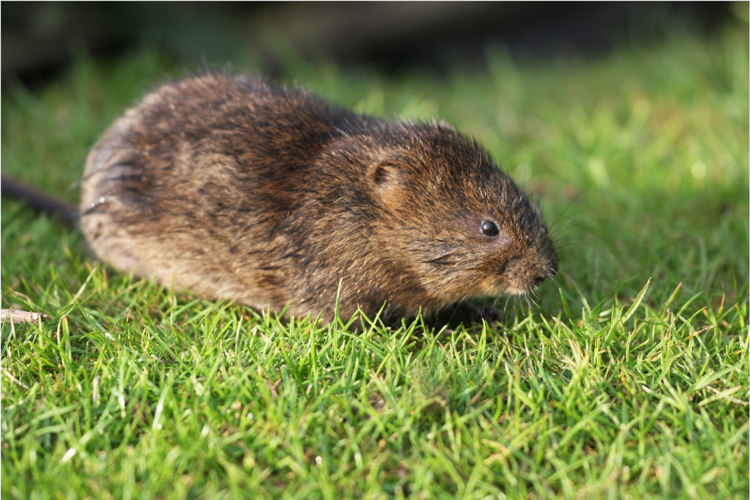Proven Vole Control Methods to Guard Your Property
Wiki Article
Comprehensive Guide to Efficient Vole Pest Control: Infestation Identification and Treatment Techniques
In the realm of effective insect control, vole infestations pose an unique challenge that requires a critical strategy. By checking out the subtleties of vole actions, recognizing essential signs of invasion, and reviewing an array of control choices, one can develop a detailed method to battle these evasive pests.Comprehending Vole Actions
Vole habits is characterized by their tunneling routines and fast recreation rates, making them a challenging insect to control efficiently. Their fast reproductive rate more complicates control efforts, with women qualified of producing multiple litters in a solitary year, each containing several children.Voles are most energetic throughout the morning and night hours, spending most of their time foraging for food. Their delving routines not just disrupt yards and yards however additionally make them challenging to remove and detect. Understanding vole habits is crucial for effective bug control methods. By recognizing their burrow areas, keeping an eye on feeding areas, and executing targeted control techniques, such as trapping or habitat alteration, vole invasions can be handled effectively.
Indicators of Vole Problem

Prevention Approaches
Carrying out reliable avoidance approaches is crucial in lessening vole infestations and safeguarding plants from their devastating feeding practices (vole pest control). To avoid vole infestations, it is important to start by eliminating possible food resources and sanctuary. Keep grass and plants trimmed short, eliminate weeds and particles, and maintain a clean yard or lawn to make the area less appealing to voles. Installing barriers such as hardware fabric or below ground secure fencing can also aid hinder voles from entering particular locations. In addition, decreasing excess moisture by taking care of dripping pipes and guaranteeing proper drainage can make the atmosphere much less welcoming for voles.On a regular basis checking the residential property for signs of vole activity, such as paths and tunnel openings, is critical for early detection and prompt activity. If vole task is believed, take into consideration utilizing traps or repellents strategically placed near their pathways.
Non-Lethal Control Methods
To efficiently handle vole populations while focusing on humane approaches, non-lethal control approaches supply useful services for reducing vole damage in gardens and landscapes. These barriers can be hidden at least 12 inches deep and curved at a 90-degree angle to prevent voles from burrowing beneath.vole yard damage

Lethal Control Options
One efficient technique for dealing with vole infestations in gardens and landscapes involves the strategic use of dangerous control options. When faced with an extreme vole problem that non-lethal techniques have stopped working to contain, implementing lethal control steps comes to be important. One generally employed deadly control alternative is the use of snap traps. These catches are developed to swiftly and humanely kill voles upon activation, making them a preferred choice for lots of garden enthusiasts and landscaping companies. To raise the effectiveness of breeze catches, it is recommended to position them in locations where vole activity is high, such as along runways or near burrow entryways. One more deadly control choice is the utilization of toxic lures especially developed to target voles. These lures contain poisonous substance that is consumed by the voles, resulting in their ultimate demise. Caution has to be worked out when using harmful baits to prevent harm to non-target animals or family pets. Generally, when utilizing deadly control options, it is crucial to do so responsibly and according to regional regulations to successfully handle vole problems.Verdict
To conclude, efficient vole bug control requires a thorough understanding of vole actions, identification of signs of infestation, implementation of avoidance strategies, and application of both non-lethal and lethal control methods. By combining these methods, individuals can successfully manage vole populations and protect their home from damages. It is necessary to deal with vole infestations quickly to stop further concerns and reduce the influence on the surrounding setting.Offered the detailed tunnel systems and rapid recreation rates particular of voles, recognizing the indicators of vole problem ends up being crucial in effective bug control. One of the primary signs of vole existence is the existence of surface runways or tracks in grass or snow, usually regarding 1-2 inches broad, developed as voles take a trip between their burrows and food resources.To successfully manage vole populaces while focusing on humane approaches, non-lethal control techniques supply useful services for reducing vole damages in landscapes and gardens.One efficient approach for addressing vole invasions in yards and landscapes involves the calculated use of dangerous control options. vole control.In verdict, reliable vole pest control requires an extensive understanding of vole behavior, identification of signs of infestation, application of prevention strategies, and application of both non-lethal and lethal control methods
Report this wiki page